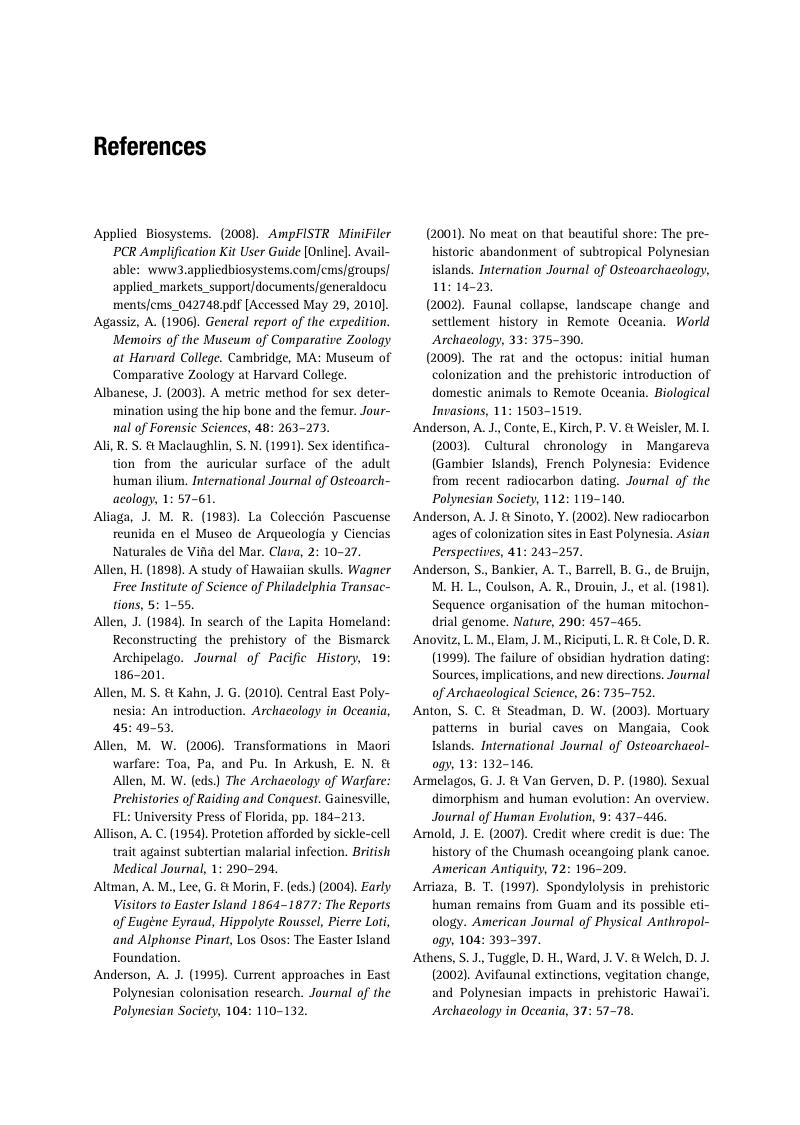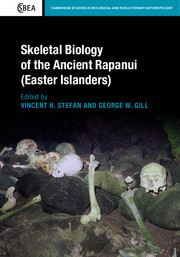Book contents
- Frontmatter
- Contents
- List of contributors
- Acknowledgements
- 1 Introduction: Research overview
- 2 Review of Polynesian and Pacific skeletal biology
- 3 Chronology and Easter Island prehistory
- 4 A descriptive skeletal biology analysis of the ancient Easter Island population
- 5 Craniometric variation of the prehistoric Polynesians and Rapanui
- 6 Rapanui non-metric cranial traits
- 7 Intra-island discrete cranial trait variation
- 8 Continuous non-metric characteristics of the early Rapanui
- 9 Rapanui dental morphology
- 10 Pelvic variability and sexual dimorphism in prehistoric Rapanui
- 11 Genetic affinities of the Rapanui
- 12 Archaeogenetics and paleodemographic estimation of founding populations: Features of residential geography on Rapa Nui
- 13 Evidence for injuries and violent death
- 14 Demographic analysis of modified crania from Rapa Nui
- 15 East Polynesian and Paleoindian parallels and contrasts in skeletal morphology
- 16 Rapanui origins, relationships, and warfare: A summary in theoretical context
- References
- Index
- References
References
Published online by Cambridge University Press: 05 December 2015
- Frontmatter
- Contents
- List of contributors
- Acknowledgements
- 1 Introduction: Research overview
- 2 Review of Polynesian and Pacific skeletal biology
- 3 Chronology and Easter Island prehistory
- 4 A descriptive skeletal biology analysis of the ancient Easter Island population
- 5 Craniometric variation of the prehistoric Polynesians and Rapanui
- 6 Rapanui non-metric cranial traits
- 7 Intra-island discrete cranial trait variation
- 8 Continuous non-metric characteristics of the early Rapanui
- 9 Rapanui dental morphology
- 10 Pelvic variability and sexual dimorphism in prehistoric Rapanui
- 11 Genetic affinities of the Rapanui
- 12 Archaeogenetics and paleodemographic estimation of founding populations: Features of residential geography on Rapa Nui
- 13 Evidence for injuries and violent death
- 14 Demographic analysis of modified crania from Rapa Nui
- 15 East Polynesian and Paleoindian parallels and contrasts in skeletal morphology
- 16 Rapanui origins, relationships, and warfare: A summary in theoretical context
- References
- Index
- References
Summary

- Type
- Chapter
- Information
- Skeletal Biology of the Ancient Rapanui (Easter Islanders) , pp. 303 - 333Publisher: Cambridge University PressPrint publication year: 2016



